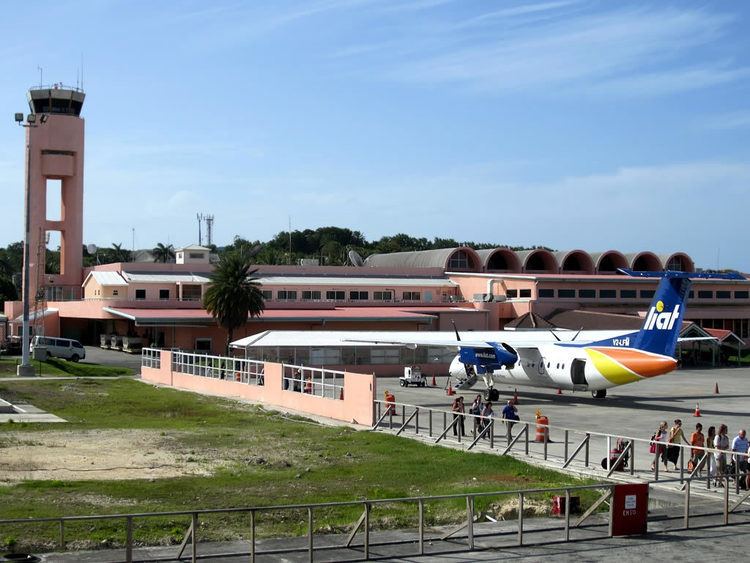Airport type Public Elevation AMSL 62 ft / 19 m Code ANU Phone +1 268-484-2300 Passenger count 919,748 | Hub for ABM AirLIAT Website vcbia.com Elevation 19 m Yearly aircraft movements 40,489 | |
 | ||
Similar Sandals Grande Antigua R, St James's Club & Villas, Jumby Bay - A Rosewoo, Trade Winds Hotel, Halcyon Cove By Rex Reso Profiles | ||
V. C. Bird International Airport (IATA: ANU, ICAO: TAPA) is an international airport located on the island of Antigua, 8 km (5.0 mi) northeast of St. John's, the capital of Antigua and Barbuda.
Contents
History
The airport originally was operated by the United States Army Air Forces.
The airport was built as a United States Army Air Forces base around 1941, and named Coolidge Airfield after Capt. Hamilton Coolidge (1895–1918), a United States Army Air Service pilot killed in World War I.
Flying units assigned to the airfield were:
Renamed Coolidge Air Force Base in 1948, it was closed as a result of budgetary cutbacks in 1949, with right of re-entry retained by the United States. Agreements were subsequently reached with the United Kingdom and, later, the Antigua government upon independence, for the establishment and maintenance of missile tracking facilities. Antigua Air Station was established on a portion of the former Coolidge AFB. As of 2011, NASA continues to utilize the Antigua facility for launch tracking services on an as-needed basis; and did so for the launch of the Mars Science Laboratory on 26 November 2011.
Upon the closure of the base in 1949 it became a civil airport. It was known as Coolidge International Airport until 1985, when it was named in honor of Sir Vere Cornwall Bird (1910–1999), the first prime minister of Antigua and Barbuda.
In December 2005, the Antigua and Barbuda Millennium Airport Corporation announced it would invite tenders to construct the first phase of a new passenger terminal designed to serve the airport for 30 years. In 2012, they announced the construction of its second terminal.
The new terminal became operational on August 26, 2015. All flights operate from the new facility. The terminal covers 23,000 square meters (247,570 square feet), with four jet bridges, modern security screening facilities, up-to-date passenger processing and monitoring facilities, and a CCTV security system. It contains 46 check in counters, 15 self-check in kiosks, 5 baggage carousels, mini food court, multiple VIP lounges, bank, retail stores, first class lounges, restaurants, and other Facilities. Other improvements included a newly constructed car park; parallel to the old terminal, along with other airport offices.
The old airport terminal is not fully out of use, as some offices still remain there.
